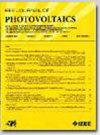Sustainability Impact of Different PV Mounting Systems and Pathways for Decarbonizing Emissions of PV Deployment
IF 2.6
3区 工程技术
Q3 ENERGY & FUELS
引用次数: 0
Abstract
The amount of electricity generated by a solar panel varies according to the installation location and chosen mounting structure. This changes the effective material consumption and the associated effective carbon emissions of electricity produced by each solar panel. This article investigates the impact of different photovoltaic (PV) mounting systems on energy yield, material consumption, and carbon emissions, focusing on the key configurations of fixed-tilt (FT), east–west, and single-axis tracking systems. As global PV capacity rapidly expands, understanding the sustainability of these systems is crucial for decarbonizing the electricity sector. We highlight the impact of different mounting systems on yield at different latitudes and demonstrate that the effective material consumption can vary by over 30% in terms of both g/Wp and g/kWh, along with the impact on carbon emissions in terms of both gCO2-eq/Wp and gCO2-eq/kWh. Pathways to reduce the carbon footprint in gCO2-eq/kWh by up to 60% compared with the FT baseline case are also discussed, including incorporating green steel and decarbonized concrete.不同光伏安装系统的可持续性影响和光伏部署的脱碳排放途径
太阳能电池板的发电量根据安装位置和安装结构的不同而不同。这改变了每个太阳能电池板产生的有效材料消耗和相关的有效碳排放。本文研究了不同光伏(PV)安装系统对能源产量、材料消耗和碳排放的影响,重点研究了固定倾斜(FT)、东西和单轴跟踪系统的关键配置。随着全球光伏发电容量的迅速扩大,了解这些系统的可持续性对于电力行业的脱碳至关重要。我们强调了不同安装系统对不同纬度产量的影响,并证明有效材料消耗在g/Wp和g/kWh方面可以变化超过30%,同时在gCO2-eq/Wp和gCO2-eq/kWh方面对碳排放的影响。与FT基线案例相比,减少碳足迹(gco2当量/千瓦时)高达60%的途径也进行了讨论,包括采用绿色钢铁和脱碳混凝土。
本文章由计算机程序翻译,如有差异,请以英文原文为准。
求助全文
约1分钟内获得全文
求助全文
来源期刊

IEEE Journal of Photovoltaics
ENERGY & FUELS-MATERIALS SCIENCE, MULTIDISCIPLINARY
CiteScore
7.00
自引率
10.00%
发文量
206
期刊介绍:
The IEEE Journal of Photovoltaics is a peer-reviewed, archival publication reporting original and significant research results that advance the field of photovoltaics (PV). The PV field is diverse in its science base ranging from semiconductor and PV device physics to optics and the materials sciences. The journal publishes articles that connect this science base to PV science and technology. The intent is to publish original research results that are of primary interest to the photovoltaic specialist. The scope of the IEEE J. Photovoltaics incorporates: fundamentals and new concepts of PV conversion, including those based on nanostructured materials, low-dimensional physics, multiple charge generation, up/down converters, thermophotovoltaics, hot-carrier effects, plasmonics, metamorphic materials, luminescent concentrators, and rectennas; Si-based PV, including new cell designs, crystalline and non-crystalline Si, passivation, characterization and Si crystal growth; polycrystalline, amorphous and crystalline thin-film solar cell materials, including PV structures and solar cells based on II-VI, chalcopyrite, Si and other thin film absorbers; III-V PV materials, heterostructures, multijunction devices and concentrator PV; optics for light trapping, reflection control and concentration; organic PV including polymer, hybrid and dye sensitized solar cells; space PV including cell materials and PV devices, defects and reliability, environmental effects and protective materials; PV modeling and characterization methods; and other aspects of PV, including modules, power conditioning, inverters, balance-of-systems components, monitoring, analyses and simulations, and supporting PV module standards and measurements. Tutorial and review papers on these subjects are also published and occasionally special issues are published to treat particular areas in more depth and breadth.
 求助内容:
求助内容: 应助结果提醒方式:
应助结果提醒方式:


